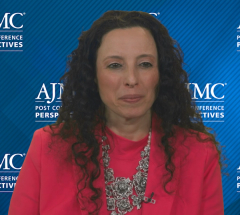
Current Practice Standard for Patients with Pretreated Hypercholesterolemia
Dr Michos offers strategies to successfully reduce LDL levels in patients with cardiovascular disease.
Erin Michos, MD, MHS: All major guidelines recommend first assessing ASCVD [atherosclerotic cardiovascular disease] risk. Essentially, the intensity of lipid-lowering therapy is matched to the absolute risk of the patient. For patients with ASCVD at very high risk, the more recent 2022 American College of Cardiology Expert Consensus Decision Pathway recommends achieving an LDL [low-density lipoprotein] reduction of at least 50% and a very low LDL target of less than 55 mg/dL. It recommends the use of adding nonstatin therapy to a maximally tolerated statin if you’re above that threshold. For ASCVD that’s not at very high risk, we have a dual goal of lowering LDL by 50% or more and achieving an LDL of less than 70 mg/dL. For patients with familial hypercholesterolemia [FH] who don’t have established ASCVD—patients with primary prevention FH—we want to see a 50% lowering of LDL and achieving an LDL at least less than 100 mg/dL.
These are much lower goals. As the science has evolved, the guidelines and statements and recommendations have evolved over time to recommend lower LDL goals. We know we can slow the progression of ASCVD and potentially even cause plaque regression with more stringency, getting lower LDL for longer and getting there faster. But it can be challenging in clinical practice to get to these lower targets. Furthermore, there are a lot of challenges in clinical practice with clinical inertia. Many patients who have ASCVD aren’t on a high-intensity statin, and they don’t have their lipid-lowering therapy intensified. For example, we saw in the GOULD registry in the United States that among patients with ASCVD, more than two-thirds remained at an LDL above 70 mg/dL. In over 2 years, only 17% of patients had their lipid-lowering therapy intensified. It’s not enough to check a box and say they’re on a statin. We need to get to lower LDL goals.
We have more tools in the toolkit. Although CLEAR Outcomes studied a largely statin-intolerant population, 22% of patients in this trial were on some statin. It’s important to note that statin-intolerance is rarely complete intolerance. More often, it’s partial intolerance, with patients often taking lower doses, but that can still have benefit when you add nonstatin therapy to it. Bempedoic acid has also been evaluated in other programs on the background of statin, so they can be used together. Often that combination can be quite effective. It’s important to note that although CLEAR Outcomes studied bempedoic acid alone, bempedoic acid also can be prescribed in a fixed-dose combination with ezetimibe. This is often the same price to have the combination in a single pill, compared with bempedoic acid alone. That can confer even greater LDL reduction. So we have more tools to get the LDL lower. We just need the will and to find a way to improve implementation in clinical practice.
Transcript edited for clarity.
Newsletter
Stay ahead of policy, cost, and value—subscribe to AJMC for expert insights at the intersection of clinical care and health economics.





























































